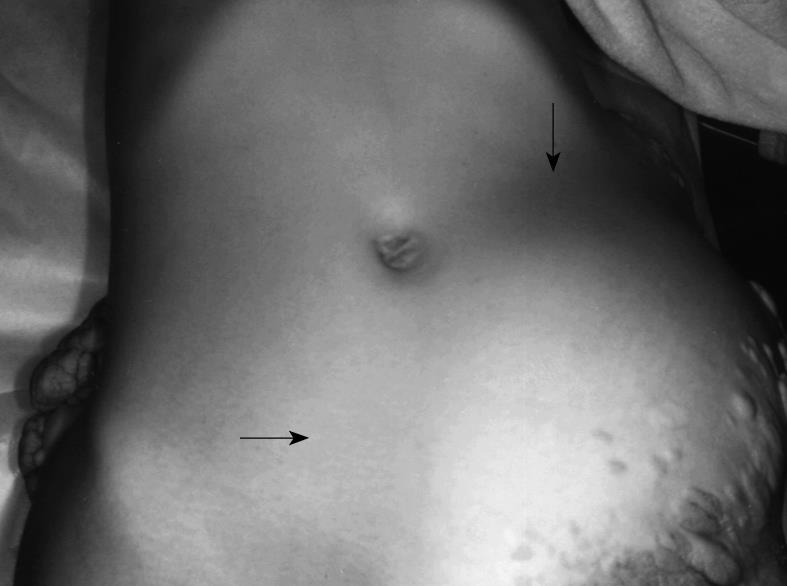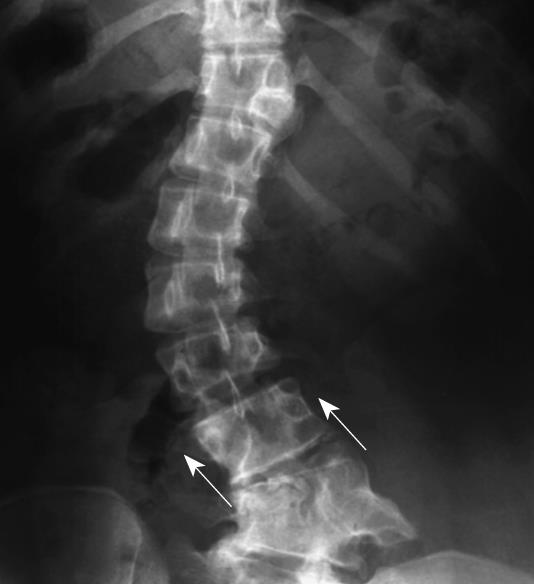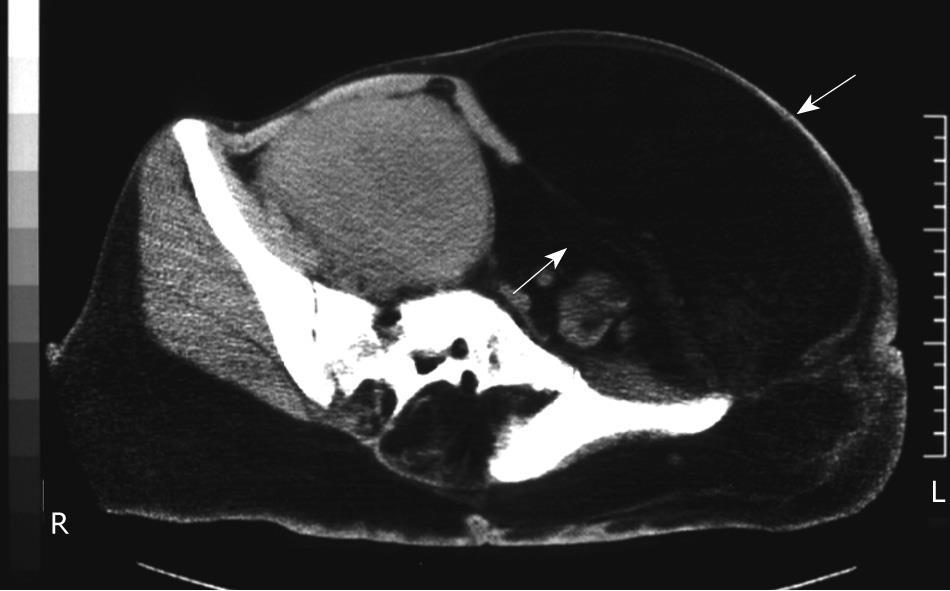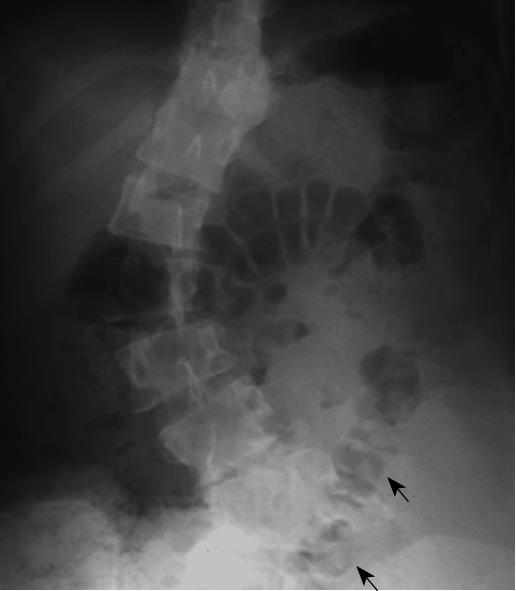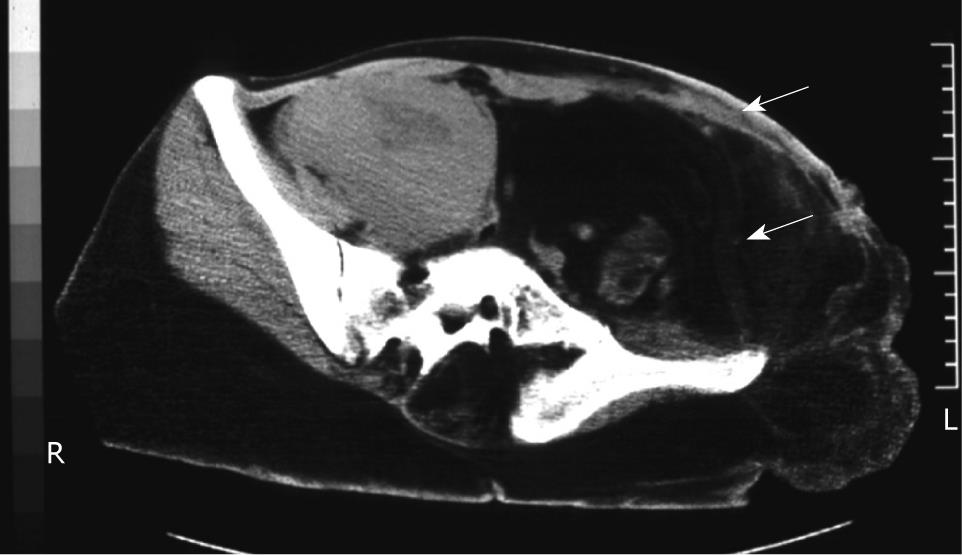Copyright
©2009 The WJG Press and Baishideng.
World J Gastroenterol. Jul 14, 2009; 15(26): 3312-3314
Published online Jul 14, 2009. doi: 10.3748/wjg.15.3312
Published online Jul 14, 2009. doi: 10.3748/wjg.15.3312
Figure 1 Clinical findings of the abdomen.
There was a child-head sized mass at the left lower abdomen (arrows).
Figure 2 A preoperative plane abdominal X-ray examination indicated that colon gas in the left colon (arrows) was shifted to the upper right side.
Figure 3 Preoperative computed tomography (CT) of the abdomen.
A large mass in the subcutaneous adipose tissue in the left lower abdominal wall was identified (arrows) and this encased the peritoneal organs to the right side.
Figure 4 Histopathological findings of the excised mass.
Lobular arrangement of mature adipocytes diffusely infiltrating into the skeletal muscle was observed.
Figure 5 A postoperative plane abdominal X-ray examination indicated that the shift of the left colon gas (arrows) was improved as compared to the preoperative state.
Figure 6 Postoperative CT of the abdomen.
The encasement of the peritoneal organs was improved as compared to the preoperative state (arrows).
- Citation: Nakayama Y, Kusuda S, Nagata N, Yamaguchi K. Excision of a large abdominal wall lipoma improved bowel passage in a Proteus syndrome patient. World J Gastroenterol 2009; 15(26): 3312-3314
- URL: https://www.wjgnet.com/1007-9327/full/v15/i26/3312.htm
- DOI: https://dx.doi.org/10.3748/wjg.15.3312













